I love that part in the Godfather movie when Clemenza leaves home to go out on a ‘hit’. His wife (who has no idea he is going out to murder someone) asks him to bring home some cannoli. After he and his accomplice finish the murder he says: “Leave the gun, take the cannoli.”
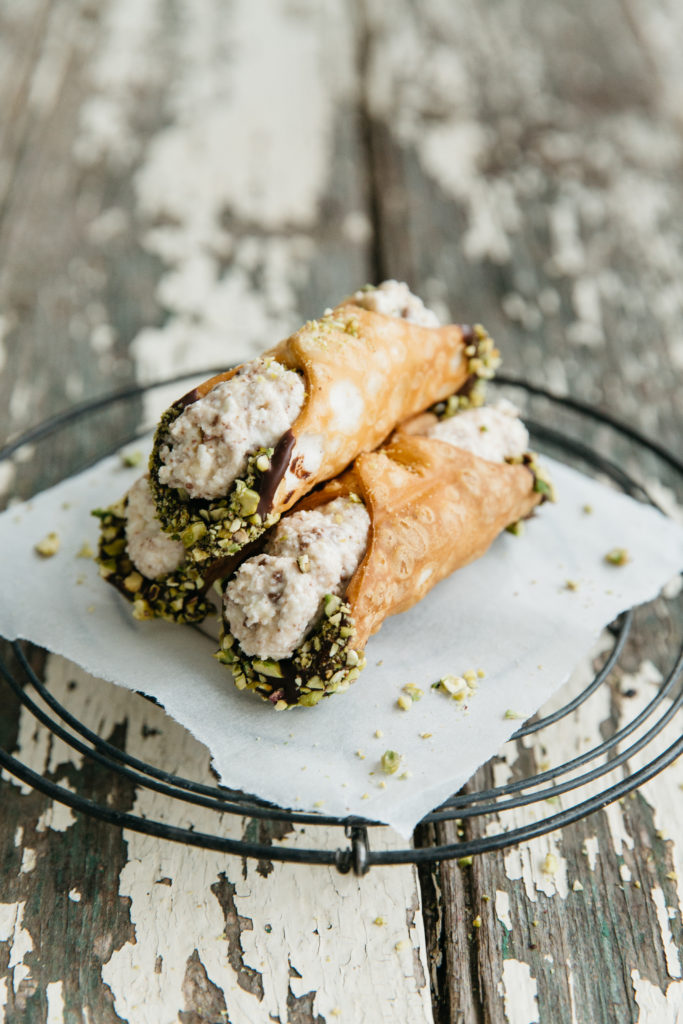
Cannoli are the quintessential Italian dessert. Crisp sweet fried pastry filled with anything from ricotta to custard cream, they adorn every Italian bakery in Italy, and are eaten all over the world.
Originating from Palermo, Sicily, during the time it was occupied by the Arabs between the years 827 and 1091, there are many myths as to how they were invented. One being that they were created by the concubines of an Arabian prince’s harem. Eager to please him and create delicious meals for their lover, the cannoli were made as a symbol of his…ahem…manhood. Another story is that they were created by nuns to celebrate Carnevale. Whichever story is true, it sure was a great invention.

So what makes a good cannoli? The pastry must be light and crisp – that is the golden rule. The dough should bubble up and blister as it cooks, ensuring a light, airy, crisp shell. The addition of vinegar in the dough is the secret, as is ensuring the oil is hot enough when they cook.
You do need some special equipment to make the cannoli. One is a pasta machine. The dough is quite stiff, and unless you have incredible upper body strength ( I do not) it is difficult to roll it out thin enough with a rolling pin. The pasta machine makes rolling out dough much easier. They’re not expensive and are a useful item to keep in the kitchen anyway – especially if you like to make Italian food.
You also need metal cannoli tubes (pictured below). Back in the day lengths of wooden dowel, or sawn off broom sticks, would have been used to form the cannoli. The metal variety are easy to find in kitchenware shops. Spray or wipe them with a little oil before you have used them the first time so the pastry doesn’t stick.
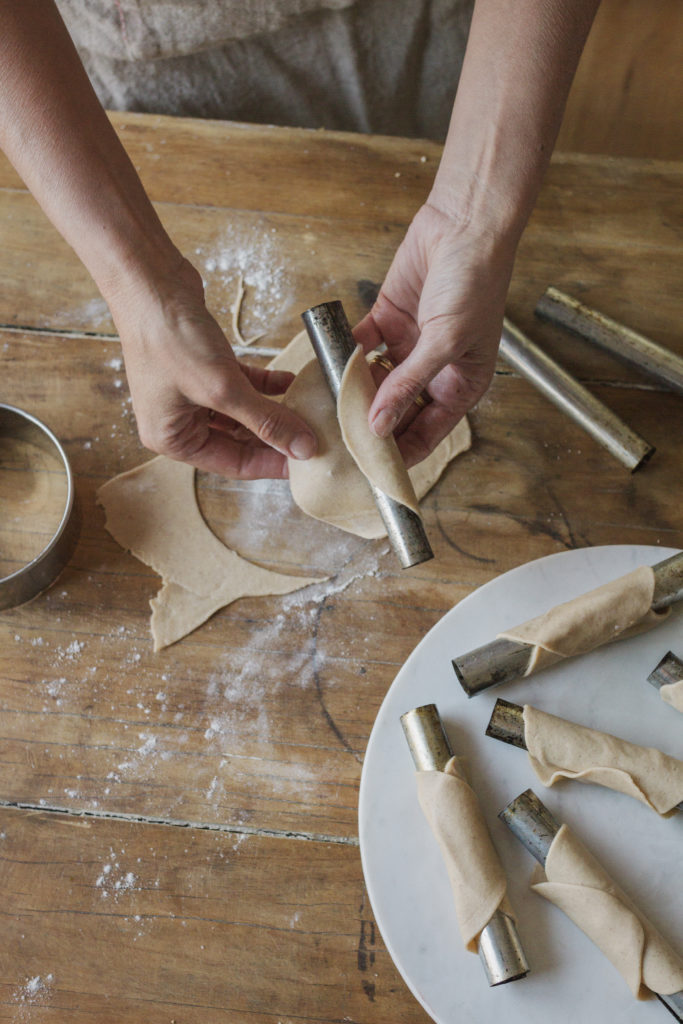
Cannoli should be filled right at the last minute to avoid the pastry absorbing the moisture from the filling and going soggy. I like to fill mine with traditional ricotta. The addition of glace fruit, nuts and chocolate make these very, very special.
Time consuming? Yes. Fiddly? Yes. Worth it? Absolutely!
Make these and you will understand why Clemenza could not leave that box behind.
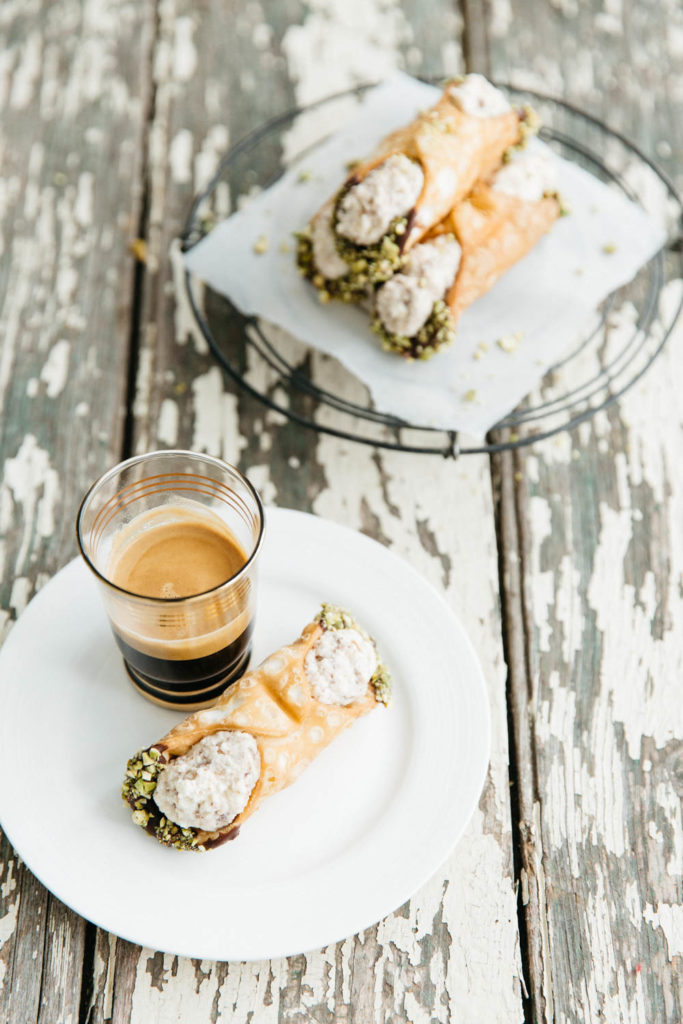
This recipe is from my first book: Easy Home Cooking Italian Style
Cannoli with Ricotta Cream, Chocolate and Pistachio
You need metal cannoli tubes (they are available at kitchenware shops) and a pasta machine to make this recipe .
Shells:
200g plain flour
30g butter, diced
1 tbsp cocoa powder
2 tbsp caster sugar
1 pinch of salt
1⁄2 tsp cinnamon
1⁄2 tsp vanilla extract
2 tbsp white wine
2 tbsp white vinegar
1 egg white
1 egg, whisked with 1 tbsp water (egg wash)
Oil, for frying
400g dark chocolate, melted
250g pistachios, finely chopped
Icing sugar, for dusting
Filling:
1 kg fresh ricotta, drained
200g cream, whipped
75g candied lemon, finely chopped
75g candied orange, finely chopped
40g dark chocolate, finely chopped
60g hazelnuts, skins removed, finely chopped
130g caster sugar
Method:
Place the flour and butter into a food processor and pulse until the mixture resembles fine breadcrumbs. Add the cocoa, sugar, salt, cinnamon, vanilla, wine, vinegar, egg white and pulse until the mixture starts coming together like a dough. Take out and knead to form a smooth dough. The mixture will be firm. Wrap in cling wrap and allow to rest for 30 minutes.
Cut the dough into 4 portions and roll with a pasta machine on the first setting 6 times, folding over on itself each time. Once the dough is smooth, keep rolling it through the pasta machine, turning the knob up a notch each time until the 6th setting. Lay the sheet of dough on a lightly floured surface. Repeat so all the dough is used. (Note – if you don’t own a pasta machine you could use a rolling pin, but as the dough is firm it will be very difficult).
Using a 10cm round cutter, cut circles from the dough. Wrap each circle around a metal cannoli tube. Dab a little egg wash on the edge to stick together.
Pour oil into a saucepan so it is at a depth of about 15cm. Heat until it reaches 180°C on a thermometer, or until a cube of bread thrown in bubbles and fries instantly. Add the cannoli tubes, only a few at a time. They should bubble immediately. Cook for no more than 2 minutes, or until they float, are dark golden in colour and look blistered. Remove with tongs and place on paper towels to cool and drain.
Using a tea towel, gently hold the cannoli in one hand while you slide it off the tube with the other. Repeat until all the cannoli are cooked. Cool.
Dip the ends in melted chocolate and then dip into pistachios. Allow to set on a wire rack. Cannoli can be stored in a sealed container for 3 days until ready to fill.
Using a piping bag fitted with a 1cm star nozzle, fill with ricotta filling just before serving. Dust liberally with icing sugar.
To make the filling:
Mix all ingredients together. Refrigerate until you are ready to fill the cannoli.
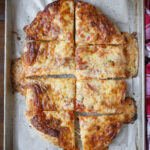

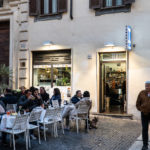
Leave a Reply